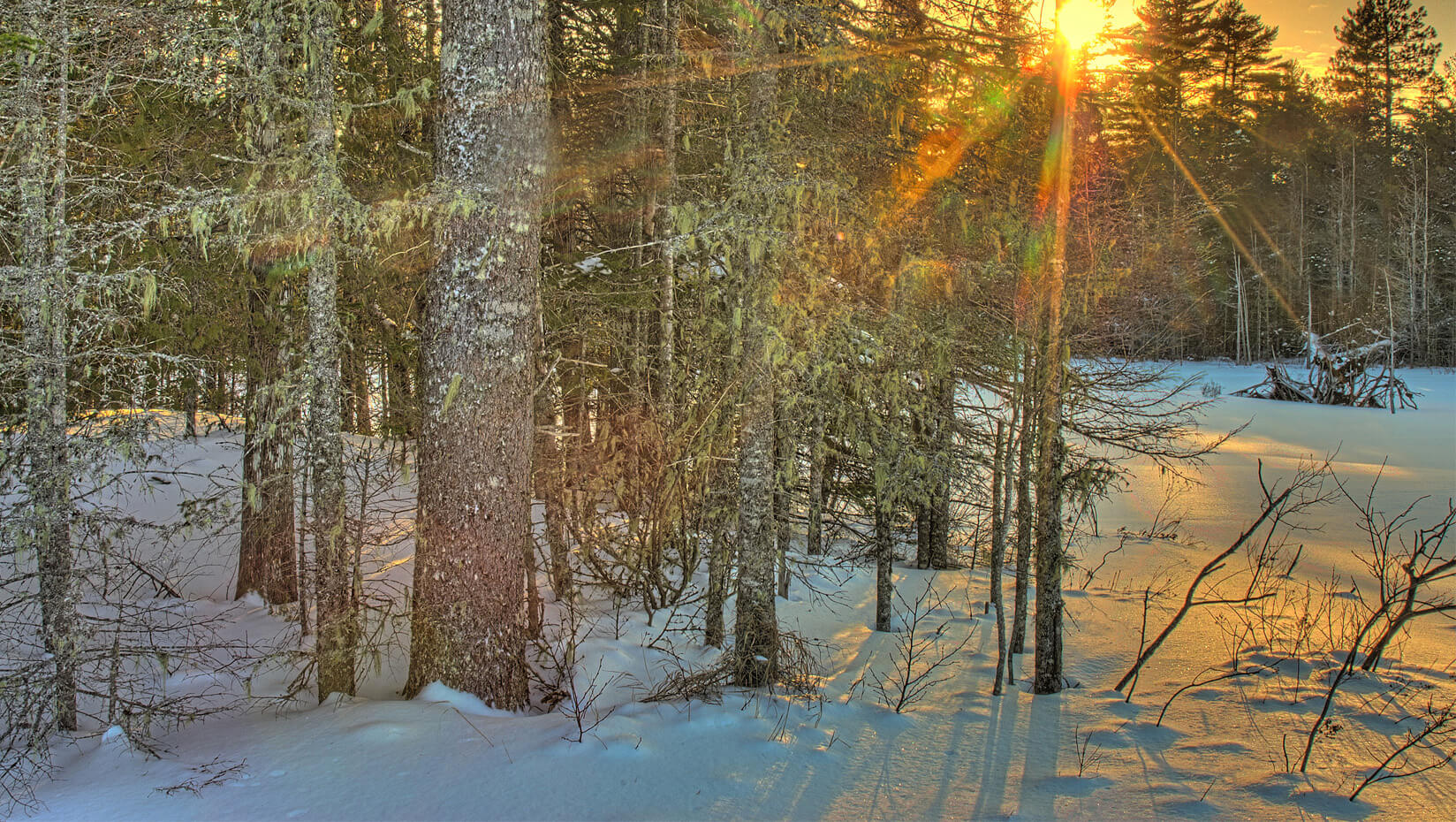
New study finds zoning ineffective for deer winter habitat conservation
Protection of only narrowly defined zones of winter habitat is not an effective means of regional habitat conservation for white-tailed deer, according to a new University of Maine study.
The study found that zoning is not an effective wildlife conservation strategy if land use is unregulated for the surrounding landscape, and that habitat protection confined to those narrow Zoning Wildlife Protection Subdistricts (P-FWs) has been ineffective.
The study, “Ineffectiveness of local zoning to reduce regional loss and fragmentation of wintering habitat for white-tailed deer,” was led by Erin Simons-Legaard, a UMaine research assistant professor of forest landscape modeling, and published in the journal Forest Ecology and Management.
When winter conditions restrict mobility and access to preferred forage for white-tailed deer, they require wintering habitat. Deer often choose wintering areas based on the characteristics of the surrounding forest, so the researchers studied the spatial arrangement of forest stands around P-FWs.
The goals of the research were “to demonstrate how knowledge of wildlife-habitat relationships may be coupled with remote sensing to monitor the effectiveness of laws and regulations to conserve wildlife habitat on privately owned and commercially managed lands and, more specifically, to evaluate the effectiveness of Maine’s land use regulations to conserve mature conifer forest as habitat for deer,” according to the scientists.
Using forest harvest maps that document landscape change between 1975 and 2007, the researchers evaluated the effects of timber harvesting on mature forest in the study area, which included about 36 percent of deer wintering areas zoned by the state of Maine in unorganized townships. The areas protected for deer wintering make up 2 percent of the forested land in the study area.
The researchers found that zoning was effective at protecting winter habitat within zoned areas, but that “the zoning protections, which have exclusively targeted core use areas, have contributed little to reducing fragmentation or maintaining habitat connectivity region-wide in northern Maine.”
In larger landscapes adjacent to P-FWs, effects of harvesting on the size and connectivity of mature conifer patches and shifts in forest composition were substantial, and accelerated the rates of habitat fragmentation and reduced the future habitat potential of the protected areas. Less than 1 percent of the mature conifer forest in the study area occurred in patches considered large enough to support deer through future winters.
The team identified loss of mature conifer forest as a major limiting factor on efforts to increase the numbers of deer in northern, western and eastern Maine.
“Our results suggest that northern Maine is losing the potential for future replacement of viable areas for wintering deer,” the researchers say. The substantial rates of loss and fragmentation documented show that “habitat conservation strategies that rely on reserves and ignore land use effects on the intervening lands may not be effective.”
The study emphasized that monitoring is needed to understand the long-term benefits of zoning in wildlife habitat conservation, and that remote sensing can be a way to overcome the difficulty of monitoring protected forest areas.
Other members of the UMaine research team were Dan Harrison, a professor of wildlife ecology, and Kasey Legaard, a research scientist in the School of Forest Resources. All three are affiliated with the Cooperative Forestry Research Unit (CFRU) at UMaine.
The research was funded by CFRU and the Northern States Research Cooperative.
Contact: Cleo Barker, 207.581.3729
